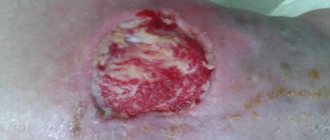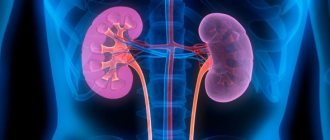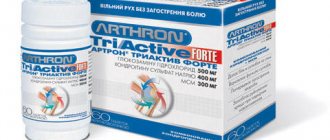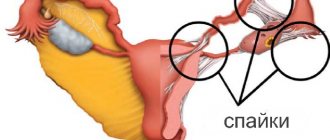The patient is treated in a hospital, following a diet and bed rest. A milk or rice diet is prescribed. Avoid salt, spices, canned foods, and alcohol. The patient's menu includes: dairy products, lean meat, eggs, fresh vegetables and fruits, parsley, dill.
Therapy includes the prescription and use of medications that will reduce the source of inflammation and restore kidney function: diuretics, antibacterials, antibiotics, ascorbic acid, calcium, antiallergic drugs.
For the nephrotic type, corticosteroids (Prednisolone), diuretics (Furasemide) and cytostatic medications (Cyclophosphamide) are prescribed;
For the hypertensive type, antihypertensive drugs are prescribed (Rezeprin, Gemiton);
After inpatient treatment, the patient is recommended to visit a sanatorium or resort area with mineral waters and a climate suitable for the type of chronic nephritis, which the doctor will help you choose.
Continue treatment at home using folk remedies, but strictly after consultation with your doctor:
- A decoction of flax seeds.
- Infusion of birch buds.
- Bearberry decoction.
- A decoction of madder.
- A decoction of chamomile and calendula flowers.
- A decoction of knotweed herb.
- Infusion of rosehip root and fruit.
- Infusion of carrot seeds.
- Horsetail decoction.
- A decoction of lingonberry leaves.
treatment of kidney nephritis
What is chronic nephritis
Chronic nephritis is a long-term inflammatory process in the renal tissue or glomeruli, which is characterized by disruption of normal vascular permeability and a decrease in the body's resistance. It is believed that there are population groups that are particularly vulnerable to the development of pathology:
- children under one year old;
- teenagers during puberty;
- old men;
- pregnant women;
- people after radiation therapy for cancer.
According to statistical studies, chronic nephritis occurs quite often after a bacterial infection. Every twentieth patient in the world encounters it between the ages of 20 and 70 years.
Kidney with nephritis increases in size
Pathogenic microorganisms penetrate through the blood or lymphatic fluid into soft tissues, where they further multiply and spread. During their life, bacteria release toxins that damage blood vessels. This leads to the release of fluid from them and the formation of soft tissue edema with a change in the structure of the organ. The kidney increases in size, its capsule becomes stretched, which leads to the development of unpleasant sensations. When the pathological process declines, the changed areas of the organ are replaced by connective tissue. It cannot perform the function of filtering the blood and purifying it from harmful impurities, which causes the development of kidney failure. It is not uncommon for one organ to shrink and be rejected by the human body.
Video: doctor talks about pathology
Classification of the disease
Types of pathology according to the nature of tissue damage:
- glazed nephritis (glomerulonephritis) - only the glomeruli are involved in the inflammatory process, protein molecules are deposited in them, disrupting the normal outflow of urine and damaging the walls of blood vessels;
- pyelonephritis - destructive changes in the underlying tissue of the kidney;
- mixed - a combination of two types of lesions.
Classification based on the cause of the disease:
- nonspecific (caused by typical microflora that lives in the body: staphylococci, streptococci, E. coli);
- specific (occurs against the background of exposure to pathogenic microbes from the outside: mycoplasma, chlamydia, gonococci).
Lifespan
Life expectancy with chronic nephritis is noticeably reduced. Patients die approximately ten years from the onset of the disease. First of all, this is due to the chronic course of the disease.
It is known that the chronic stage is difficult to treat. Often the most radical technique is required. But only according to indications and under the supervision of a doctor. This allows you to avoid unwanted consequences.
Life expectancy increases if the patient follows the doctor’s recommendations. Takes medications, leads a healthy lifestyle and eats right. All these principles can improve the quality of life of sick people!
Treatment
Treatment of kidney nephrosis is a set of measures aimed at stabilizing the patient’s condition.
Basic goals of therapy:
- Elimination of the root cause of nephrosis.
- Elimination of edema.
- Normalization of protein metabolism in the body.
Lipoid nephrosis, which develops against the background of a bacterial infection, requires the use of antimicrobial agents (macrolides, cephalosporins, penicillins). The dose is selected individually depending on the severity of the pathological process.
Blood pressure correction is carried out with the help of antihypertensive drugs (Enalapril, Valsartan, Hydrochlorothiazide). Edema is eliminated with the help of diuretics - medications that remove excess fluid from the human body (Furosemide, Hypothiazide).
Treatment of necrotic nephrosis involves the use of detoxification therapy aimed at preventing the development of shock.
Diet remains an important aspect of the full treatment of patients with nephrosis. The patient limits fluid intake (up to 1 l), salt (up to 5 g per day). Progression of renal failure is an indication to reduce the daily amount of protein food. Therapy in each case is individual in order to accelerate the stabilization of the patient's condition.
Folk remedies
Much has been said above about the symptoms of kidney disease. Nephritis is a serious illness, and you need to take a responsible approach to its treatment. Some even decide to supplement drug therapy with the use of folk remedies. There are dozens of different recipes, and here are the most popular:
- Pour boiling water (1 l) over carrot seeds (3 tbsp). Let it brew overnight, then strain. Drink on an empty stomach 4-6 times a day in small portions.
- Dissolve mumiyo (1 g) in 1 liter of boiled water. Drink 0.5 glasses twice a day half an hour before meals.
- Boil figs in milk. Strain. Drink 2 glasses of fig milk a day.
- Pour gooseberries (2 tbsp) with 1 glass of water and simmer for 10 minutes. Boil, add one spoon of honey, stir. Drink 4 times a day, 0.5 cups.
- Pour a glass of boiling water over corn silk (1 tsp) and boil for 20 minutes. Then let it brew for half an hour and strain. Every three hours, drink 2 tbsp. l.
- Pour boiling water (0.5 l) over hop cones (2 tbsp), let it brew for 2 hours and strain. Drink 4 times a day, 0.5 cups.
- Pour stinging nettle (1 tbsp) into a glass of boiled water. Let it brew for 10 minutes, then strain. Drink 1 tbsp three times a day. l.
- Pour a glass of boiling water over crushed calamus rhizome (1 tsp). Leave for 20 minutes and strain. Drink 4 times a day, 0.5 cups, half an hour before meals.
There are many other recipes. The use of folk remedies really helps to alleviate the symptoms of kidney nephritis. They can contribute to treatment, but only if the doctor approves it.
Why does chronic nephritis develop in patients?
The main reason for the formation of the inflammatory process is the penetration of bacteria into the body. Most often, the causative agents of this pathology are staphylococci, streptococci, Pseudomonas aeruginosa, amoebas, Proteus, mycoplasma and ureaplasma. There are also specific factors that increase sensitivity to harmful microorganisms:
- immune deficiencies (congenital and acquired);
- local and systemic infectious diseases (chicken pox, diphtheria, typhoid fever, salmonellosis);
- circulatory pathologies (thrombosis, embolism);
- developmental abnormalities of the urinary tract;
- malignant tumors with metastases;
- inflammatory processes in neighboring organs and tissues;
- benign tumors;
- recent surgery or traumatic injuries.
The first signs of the formation of pathology in the body
Chronic nephritis is characterized by a gradual and extremely slow increase in symptoms. Often patients do not pay attention to them, citing overwork. It becomes possible to suspect the presence of the disease only with extremely intense manifestations. The symptomatic picture of chronic nephritis includes:
- Changes in urine characteristics. It becomes darker and cloudier, taking on a reddish hue due to the accumulation of protein, toxins and inflammatory cells. Some patients note the appearance of sand after a heavy intake of fatty, salty and fried foods.
- Pain when urinating. Unpleasant sensations accompany the process of urine excretion (especially in the evening). The patient is bothered by false urges, during which 1–2 drops of urine are released.
- Nagging pain in the lumbar region. They intensify with neuropsychic stress, physical activity, lack of sleep or the body's stress response. These sensations are directly related to the enlargement of the kidney due to inflammatory edema.
- The occurrence of general intoxication. The victims' temperature rises to 37, their appetite disappears, their performance decreases, and headaches appear. This can occur when bacterial toxins enter the central nervous system. Many patients also suffer from periodic increases in blood pressure to 180/110 mmHg or more.
Exacerbation: symptoms
During the period of relapse of the chronic form, the main complaint is severe pain localized in the lumbar and pelvic area. Urination becomes painful and a burning sensation occurs. Laboratory testing can detect blood and purulent discharge in the urine. Oliguria is observed - decreased diuresis. Swelling persists. Additions include headaches, nausea (often vomiting), fatigue, xerostomia, diarrhea, fever and hypertension. Chronic nephritis can result in exacerbation due to overheating, hypothermia, or an infectious process.
Methods for making and confirming diagnosis
After the first symptoms of the disease appear, you should consult a urologist or nephrologist. The doctor conducts an examination and prescribes additional tests, on the basis of which a specific course of treatment is selected for each patient. People with chronic nephritis have typical external features that immediately suggest kidney problems:
- dull gray complexion;
- dark circles under the eyes;
- swelling of the upper half of the body and head;
- pastosity (slight swelling) of the lumbar region.
Facial swelling is associated with fluid accumulation in soft tissues
Next, the doctor needs to collect an anamnesis: the time of onset of the first symptoms, the characteristics of the pain and its nature, the presence of other acute or chronic diseases. After communicating with the patient, the doctor prescribes a range of examinations to clarify the nature of the pathological process. These include:
- general urinalysis - typically the detection of protein, bloody impurities, sand, salts and leukocytes, which indicates active inflammation;
- microscopic examination of urine allows you to identify a bacterial pathogen and determine its sensitivity to antimicrobial drugs;
- Ultrasound diagnostics shows the structure of the urinary system, the presence of foreign bodies and tumor formations.
Forecast and consequences
Chronic nephritis cannot be completely cured. However, if you follow the specialist’s instructions and timely seek help for any negative symptoms, you will be able to achieve stable remission.
Refusal of treatment often leads to the development of serious complications, such as:
- renal failure;
- severe form of hypertension;
- development of atherosclerosis;
- increased susceptibility to infectious diseases against the background of decreased immunity.
A patient with chronic nephritis will have to make some lifestyle adjustments. You should avoid professional sports and any exercise that involves excessive physical activity. But special gymnastics, on the contrary, will be beneficial. The possibility of performing exercises should be discussed with your doctor.
Before pyelonephritis, I regularly visited the gym. I had to give up classes for six months. But I continued to lead an active lifestyle, walking a lot. There were no global changes in physical fitness.
Video: gymnastics for the kidneys
Therapy to cure kidney disease
Acute nephritis can proceed unnoticed at first, disguise itself as another disease, and only at its peak development can it manifest its symptoms. Treatment of nephritis can take from one month to six months, and chronic nephritis can bother a person for years. With nephritis, the patient should adhere to strict bed rest and diet. The main forbidden foods are salt and liquid. The liquid must initially be limited to 300 ml, followed by an increase to 600 ml (700-800 ml) per day. Drug treatment is also prescribed: antibiotics, antihistamines, antibacterial medications and diuretics (diuretics).
In adults
Chronic nephritis in adults is the most common disease. Especially in weakened people. Including the elderly population. The disease is more often observed in women.
But it can also occur in men. Much depends on the presence of acute nephritis. Acute nephritis is the precursor to the chronic course of the disease.
Chronic nephritis in adults can also be an independent disease. What in this case is characterized by an unclear etiological factor. An adult may not be aware of the disease for a long time.
An adult is not aware of chronic nephritis due to its slowly progressing process. It can last for years. Ultimately, a common complication is kidney failure.
In the presence of malignant hypertension, heart failure may develop. The result is death if medical care is not provided. Middle-aged and elderly people are susceptible to the disease.
Chronic nephritis rarely develops in young people. Since the course of the disease is long. And it is progressing slowly.
go to top
Various Treatment Options for Chronic Nephritis
The duration of therapy for kidney pathology largely depends on the time of its detection. If the course of the disease is favorable, a complete cure is possible in a short time (up to 3–4 months), but if secondary complications occur, the course can last from six months to several years. At the initial stage of the disease, doctors prescribe a gentle regimen for the patient with changes in the usual diet and a decrease in physical activity. At later stages, the use of pharmaceuticals is involved, which can effectively cope with symptoms and remove bacteria. In younger patients, physiotherapeutic procedures are used to restore the functions of the urinary system.
Traditional recipes can be used throughout the entire course of treatment if they are combined with other remedies.
Drug therapy for the disease
Pharmaceutical drugs are actively used both to combat the symptomatic manifestations of the disease and to eliminate its cause. Currently, doctors adhere to the principle of minimal prescription of effective drugs: the patient is not overloaded with medications, adding or removing them as required. Many drugs are available in several forms: suppositories for rectal administration, tablets, capsules, solutions in ampoules for intramuscular or intravenous injection.
All dosages are calculated based on the patient’s weight, age and the presence of chronic pathologies. Self-prescription of medications often leads to the development of spontaneous allergic reactions, which I encountered while working in an ambulance. An 80-year-old woman, on the advice of her neighbor, purchased a drug to combat chronic nephritis, but after taking the first pill, she lost her breath and the woman almost died from suffocation. The main diagnosis was Quincke's edema and anaphylactic shock - a reaction to a foreign substance. Only thanks to the actions of doctors was it possible to avoid death.
What drugs are used to treat the disease:
- Antibiotics destroy pathogenic microorganisms that are the source of infection. They prevent further proliferation of bacteria, which leads to their independent removal from the patient’s body. The drugs in this group include: Streptomycin, Rifampicin, Benemicin, Levorin, Nystatin, Amoxiclav, Cephalexin, Cefazolin, Ceftazidime, Tienam, Meropenem, Metacycline hydrochloride, Kanamycin, Amikacin, Vibramycin, Levofloxacin, Ofloxacin.
- Non-steroidal anti-inflammatory drugs reduce the severity of swelling and relieve pain. For this purpose, doctors prescribe Nimesulide, Ketotifen, Aspirin, Ketorol, Diclofenac, Ketorolac, Tamoxifen, Ibuprofen, Piroxicam, Metindol, Nise, Naproxen, Phenylbutazone, Ponstan, Ortofen, Erazon, Brufen.
- Drugs to normalize blood pressure are used when it rises above 160/100 mm Hg. They help prevent the formation of a hypertensive crisis and protect target organs (brain, heart, retina) from damage. Most often, Veroshpiron, Furosemide, Enalapril, Quinalapril, Perindopril, Capoten, Captopril, Diltiazem, Valsartan, Diovan, Dichlothiazide, Spironolactone, Hydralazine, Minoxidil are used for this purpose.
- Immunostimulants improve the functioning of the body's defense systems, forcing it to fight infection. These include Timalin, Timogen, Cycloferon, Viferon, Immunal.
Photo gallery: medications for treating the disease
Amoxiclav is a broad-spectrum antibiotic that kills all microbes
Nise relieves swelling and inflammation
Furosemide removes excess fluid from the body
Immun helps increase the body's defenses
Dietary recommendations for patients with chronic nephritis
Diet is an important step in the recovery of patients with lesions of the urinary system. During inflammatory processes, the body actively spends energy to fight harmful microbes, resulting in some depletion of proteins, fats, carbohydrates and mineral and vitamin elements. That is why it is so necessary to improve the nutrition of patients with chronic nephritis.
All patients are advised to adhere to the following principles:
- using only fresh products;
- daily change of dishes;
- food should be baked, boiled or stewed with a minimum amount of oil;
- refusal of harmful foods (fast food, sweets, chips);
- the maximum weight of one serving is 350 grams;
- drinking up to 2 liters of pure still water during the day.
What to add to your diet:
- milk and dairy products (cottage cheese, fermented baked milk, yogurt, kefir);
- lean and meat soups (borscht, cabbage soup, rassolnik, okroshka, gazpacho, mushroom, pea);
- durum pasta;
- vegetables and fruits;
- berries and nuts;
- honey instead of sugar;
- fish, chicken, turkey.
Photo gallery: healthy food
Dairy products are a source of calcium
Vegetables and fruits are rich in fiber
Meat meets the need for animal protein
Traditional medicine as an aid
If you cannot visit a doctor in the near future or purchase a medication at a pharmacy, it is permissible to use natural recipes. They contain much less active ingredients and will not be able to completely cure you of chronic nephritis, but they effectively cope with the symptoms of the disease. At the same time, many patients note low cost and accessibility as additional advantages of this treatment method.
Don't forget that plants and herbs easily cause an allergic reaction. Before using this or that product, it is necessary to conduct a preliminary test: apply a few drops of the solution to your wrist and wait 10–15 minutes. If there is no reaction (itching, burning, blisters or spots, redness), you can continue to use. In other cases, you should take an antihistamine (Tavegil, Claritin) and look for a more suitable method for yourself.
You should not completely abandon the use of traditional drugs. During my practical work, I happened to encounter a woman who, in order to cleanse the body for chronic nephritis, did not take any medications, did not eat regular food, preferring to sit only on liquid purees, juices, decoctions and infusions. This led to the fact that within a few months the patient developed serious disturbances in the functioning of the gastrointestinal tract: she stopped digesting regular solid foods, and her kidneys began to fail. Doctors attributed this to general exhaustion of the body due to lack of nutrients. The victim was hospitalized and fed through a tube, and one of her kidneys had to be removed because it had shriveled. It would have been possible to avoid this complication if the patient had not completely replaced traditional treatment with natural remedies.
The most popular folk recipes for the treatment of chronic nephritis:
- Mix 100 grams of cranberries with the same amount of blueberries (you can use fresh, dried or frozen berries). Place them in a saucepan with 2 liters of water and cook for half an hour, stirring constantly. At the end, add a teaspoon of cloves and honey for taste. Drink 1 glass every 4 hours, while it is better to stay at home for the whole day. Cranberries and blueberries have a pronounced diuretic effect and allow you to remove all toxins from the body. The cleansing procedure should be carried out no more than once every 2 weeks, so as not to provoke dehydration.
- Peel 5-7 large oranges and dry the peels in the microwave or oven. Grind them together with the pulp in a blender, then mix with sugar or honey, adding half a spoon of cinnamon. Add the resulting mixture in small quantities to any drinks (tea, coffee, kefir). Orange in combination with cinnamon and honey has anti-inflammatory effectiveness and reduces the likelihood of secondary complications. You need to be treated in this way for six months.
- Crush 100 grams of onion peel and pour 400 ml of vodka or medical alcohol. Cover the container with a warm scarf and place in a cool, dark place for 3-4 weeks. Every 5 days it is necessary to shake the contents of the bottle to form a uniform suspension. After a month, carefully filter the tincture using gauze or a fine sieve, removing the raw materials. Add 5-10 drops to water and drink in the morning before breakfast. Onion tincture allows you to cope with the main manifestations of the pathological process: lower back pain and general malaise. This method should be used for 1 month.
Photo gallery: basic folk remedies to combat the disease
Cranberry - a berry with an antibacterial effect
Citrus fruits effectively fight inflammation
Onion reduces the symptoms of nephritis
Nutrition rules for nephritis
nutrition for nephritis
The purpose of the diet depends on the stage of the disease. If it has become chronic, but all kidney functions are normal, then you can eat as usual. Strict diets are not required here. It is only important to minimize the consumption of salt, liquid and protein. This allows you to avoid overloading the kidneys, in which case new stones will not appear.
It is necessary to get enough calories, so proteins, fats and carbohydrates must be balanced. In the chronic form of jade, so-called fasting days, for example, on apples, cucumbers or watermelons, are especially useful.
If you have been prescribed a diet, then you need to adhere to the following recommendations:
1. Bread should be consumed with the least amount of salt; it should not be added to pancakes or pancakes.
2. Meat is necessary, but it should be lean types. For example, lean beef, trimmed pork, chicken or rabbit, and veal are suitable. Cooking methods: boiling, baking.
3. Low-fat fish, any preparation is acceptable.
4. Dairy and fermented milk products and drinks.
5. Eggs. They can be fried or boiled, but it is not recommended to eat more than 2 pieces per day.
6. Vegetables, berries and fruits are suitable in a variety of forms and in any form, honey and nuts are also acceptable.
7. Drinks. You can drink tea, vegetable and fruit juices, decoctions of rose hips, lingonberries, and strawberries.
For nephritis, there is a list of prohibited foods. The very first thing in it is salt. Its consumption must be reduced in every possible way. The same applies to vegetable protein, which greatly irritates the kidneys. Also, do not drink alcohol, strong coffee, hot chocolate, mineral water, smoked meats, marinades and fermented foods. The kidneys suffer greatly from the listed foods and drinks.
Methods for diagnosing, treating and preventing the disease
Correct diagnosis is a very important part of treatment. The effectiveness of the chosen therapy depends on the diagnosis and identification of the characteristics of the disease. The following methods are used to detect acute nephritis:
- blood test (general);
- blood chemistry;
- urine analysis (general and various types of samples);
- bacterial culture of urine;
- Ultrasound;
- ECG.
The listed methods are mandatory. To identify additional features that can affect the course of treatment, biochemical urine analysis, kidney biopsy, etc. are used.
A very important stage of diagnosis is the collection of anamnesis. Thanks to it, the doctor can determine the presence of a hereditary predisposition to the manifestation of this disease, find out what diseases have been suffered, what properties of the body can become an obstacle to effective treatment, etc. In some cases, you may also need the help of other specialists, for example, a gynecologist, otolaryngologist, etc.
Features of therapy
Acute nephritis is usually treated by a nephrologist or urologist. However, since the disease is often associated with the influence of immune system characteristics, the patient may require the help of an immunologist.
Important! Medical care for acute nephritis is provided only in a hospital setting under the supervision of doctors. A prerequisite for such a diagnosis is bed rest.
Only after the pathological process has weakened is the patient allowed to gradually get out of bed. Another part of the treatment is a diet in which you need to limit the amount of salty and spicy foods.
The main method of treating nephritis is medication. Actions are carried out in several directions. This:
Elimination of the causes of the inflammatory process. If nephritis is of infectious origin, antiviral agents (Acyclovir, Proteflazid) or antibiotics (Ceftriaxone, Augmentin) are used. If nephritis occurs as a reaction to a drug, then this drug is immediately discontinued, and in return a drug is prescribed that can quickly remove dangerous substances from the body (Enterosgel, Atoxil).
- Prevention of further development of the disease. For this purpose, the following groups of drugs can be used:
- hormonal (Prednisolone);
- helping to normalize blood circulation (Curantil).
antihistamines (Suprastin);
- Overcoming symptoms. This direction depends on what phenomena most worry the patient. In accordance with this, medications from the following groups are prescribed:
- diuretics (Furosemide);
painkillers (Voltaren, Ibuprofen);
- antispasmodics (No-shpa);
- blood pressure normalizers (Captopril), etc.
The choice of medicines depends on the individual characteristics of the patient (each medicine has contraindications that should be taken into account), the severity of the disease and other characteristics. It is very important that the prescribed drugs are combined with each other. Therefore, the choice of medications remains with the doctor.
The patient should closely monitor his health and notify the specialist about any reactions that occur to the drugs. If unpleasant features appear, you should inform your doctor about them, as this may be a signal of intolerance to the drug.
Traditional methods of treatment for acute nephritis are used very rarely, since this disease requires quick and effective treatment, without delay. Most often, folk remedies are used to prevent relapses and strengthen the body after recovery.
Drug therapy
Adequate treatment of kidney nephritis can only be prescribed by a doctor after an examination. What drugs will need to be treated depends on the type, form of the disease, as well as the individual characteristics of the patient.
But, as a rule, one of the following is prescribed:
- Antibacterial drugs: Cephalexin, Ampicillin, Erythromycin. They provoke the destruction of harmful bacteria in the kidneys, and therefore form the basis of therapy. After all, the most important thing in treatment is the direct impact on the cause.
- Antihypertensive drugs: “Zenusin”, “Gemiton”, “Isoptin”, “Adelfan”, “Triniton”. They normalize blood pressure. Contraindications are cardiovascular diseases, gastric and duodenal ulcers, as well as individual intolerance to the components.
- Heart medications: “Diroton”, “Enam”, “Captopril”. They normalize the functioning of the cardiovascular system. These drugs should be used with caution. If a person has low blood pressure, hypersensitivity to ATP inhibitors, aortic or mitral stenosis, then it is better for him not to take them.
- Immunosuppressants: Cytoxan, Leukeran, Imuran. These drugs artificially suppress the immune system, which helps minimize kidney swelling. But if bone marrow functions are suppressed, they should be discontinued.
- Diuretics: Spironol, Hypothiazide, Aldopur, Furosemide. These drugs help increase the rate of urine formation and its exit from the body. They should not be taken in case of liver or kidney failure, or if a person has increased venous pressure, diabetes mellitus or anuria.
For kidney nephritis, the most effective drugs are Renel N, Canephron, Hepabel, Artibel, Urostin and Nephrox. The patient is also prescribed vitamins and calcium.
If the case is severe, the person may be referred to undergo a procedure to cleanse the blood of accumulated toxins (hemosorption and plasmapheresis).
Features of the symptomatic picture and treatment of the disease in childhood
The body of a small person is significantly different from the body of an adult. A child's kidneys are smaller, and the urinary system is extremely vulnerable to harmful environmental factors. This explains the more frequent infection during initial contact with bacteria or viruses. In children, the disease occurs with constant periods of exacerbation (reaction to stress, swimming in open water, hypothermia). The disease begins with a rise in temperature to 38–38.5 degrees Celsius, severe pain in the lower back and urination problems. Preschool children become more lethargic and apathetic, refusing to eat and play. Schoolchildren and adolescents experience decreased concentration and attention, decreased performance, and headaches with migraine attacks.
In children under one year of age, with an extremely unfavorable course of the disease, periodic febrile convulsions are observed. They may be the body’s reaction to an insufficient amount of mineral elements or a sharp increase in temperature.
Treatment of chronic nephritis in children is based on the same principles as treatment of the adult population. The dosages of medications change, some of them alternate with more gentle ones. All victims are also prescribed a special diet with a limitation of harmful foods. Pharmaceuticals used to treat pathology in children:
Photo gallery: drug therapy for chronic nephritis in children
Flemoxin Solutab is a broad-spectrum antibiotic used to fight microbes
Regidron normalizes the salt composition of biological fluids
Children's Nurofen contains a lower dosage of the substance
To completely eliminate the symptoms of pathology, physiotherapeutic procedures are also used:
- inductothermy - the use of a high-frequency magnetic field, the effect of which is the generation of heat and improved blood circulation;
- ultrasound - vibration increases the intensity of penetration of the drug into soft tissues;
- electrophoresis - the introduction of pharmaceuticals into the body using electric current;
- UHF therapy - an ultra-high frequency electric field is applied to the patient’s body, which reduces the activity of inflammation.
Photo gallery: physical therapy of the disease
Medicinal electrophoresis stimulates regeneration processes
UHF therapy is performed for almost all children with an inflammatory process
Ultrasound therapy improves drug absorption
Diagnostics
A detailed study of symptoms and examination can reveal nephritis. The doctor is trying to identify the factor that provoked the onset of the disease. Asks about previous infections, medications taken, and contact with toxic substances. Prescribes OAC, OAM. Tests show the composition of urine. The mandatory method for detecting nephritis is a biopsy (tissue sampling for histology). It is necessary to undergo an ultrasound, x-ray, tomography.
A mandatory procedure is donating blood for biochemistry, which allows you to determine:
- protein level in urine;
- pathological changes in kidney function based on creatinine and urea levels;
- content of microelements (potassium, calcium, magnesium, sodium).
Treatment prognosis and probable complications of chronic nephritis
Any renal pathology leads to disruption of the activity of the entire body, since these organs are responsible for the elimination of toxic substances. That is why, if diagnosis and treatment are not timely, the prognosis is extremely unfavorable. The success of recovery is largely influenced by the patient’s age, the characteristics of his lifestyle and behavior, the presence of bad habits and immune deficiency, acute and subacute diseases of other organs. People with a long course of chronic nephritis may become disabled if the disease is complicated by renal failure or the need for constant dialysis - artificial blood purification.
Young patients are several times more likely to recover. Doctors directly associate this with rapid metabolic processes.
A special role in recovery is played by the victim’s compliance with the regimen prescribed by the doctor. It includes a certain diet, giving up bad habits and heavy physical activity, restrictions on work and sports activities. During my practice, I had the opportunity to participate in the treatment of a patient who encountered complications due to violation of the regime. A young man who was a professional weightlifter suffered from acute nephritis at the age of 20. Due to the proximity of the competition, he refused to undergo a full course of antibacterial therapy, and also did not limit physical activity. This led to the transition of the pathological process to the chronic phase. During the next competition, the victim felt a sharp pain in the area of his left kidney, which forced him to resort to calling an ambulance. The man was urgently hospitalized in the intensive care unit, where an operation was performed to remove the stone. The long course of chronic nephritis was complicated by the addition of urolithiasis. After the crushing of the conglomerates, the patient was seen by a doctor for a long time, and had to give up professional sports forever.
Doctors believe that excess stress on the kidneys occurs with certain types of training or vigorous physical activity. In this regard, professional athletes need to reconsider their regimen. What types of exercises are prohibited for chronic nephritis:
- long and high jumps;
- short and long distance running;
- lifting weights (more than 5 kilograms);
- squats and lunges;
- bench press;
- rotation of the hoop.
It is recommended to give up hard forms of sports: hockey, football, basketball, weightlifting and wrestling can lead to a worsening of the pathological process and provoke the development of unpleasant consequences. What complications are most common in patients with chronic nephritis:
- formation of acute renal failure;
- the formation of conglomerates in various parts of the excretory system - urolithiasis;
- the occurrence of benign tumors and cystic changes;
- shrinkage of the kidney and the need to remove it;
- transition of the inflammatory process to the bladder (cystitis), urethra (urethritis), prostate gland (prostatitis);
- sepsis and septic shock - massive blood infection with microbes and their toxins;
- nephroptosis - prolapse of one or both kidneys;
- polycystic disease;
- purulent pathologies (phlegmons, abscesses, carbuncles);
- hydronephrosis - accumulation of fluid in the pelvis;
- changes in the permeability of the vascular wall, damage to arteries and veins due to the formation of blood clots;
- poisoning of the body with products of its own vital activity;
- convulsive syndrome due to lack of calcium and magnesium.
Photo gallery: complications of chronic nephritis
Cystitis is an inflammatory process in the wall of the bladder
Hydronephrosis is the accumulation of fluid in the renal pelvis
Chronic nephritis creates conditions for the development of cysts
Prevention
Renal nephritis of the chronic type is usually the outcome of acute nephritis. Therefore, preventive measures include early diagnosis and subsequent treatment of acute kidney inflammation. The disease can be suspected at an early stage if regular medical examinations are carried out - deviations in the general urine test are an indicator that the patient should be sent for consultation to a nephrologist.
Nephritis is a kidney disease that leads to impaired kidney function. The chronic form is irreversible and leads to the formation of renal failure. The pathology requires lifestyle modification and the use of a number of medications. Timely treatment of the acute form will help prevent its formation. Timely diagnosis will help with this.
Metanephridia
Metanephridia (Greek Meta - between, after, through, nephridion - diminutive of the Greek Nephros - kidney) - the excretory organs of invertebrates are metamerically located, mainly in annelids. Develop from ectoderm or mesodermal nephroblastoma. Metanephridia are tubular canals that open at one end (ciliated funnel or nephrostomy) into the secondary body cavity (coelom) of the previous segment, and at the other (excretory pore) outward. Through the nephrostome, the coelomic fluid, primary urine, probably enters the lumen of the metanephridia, the movement of which through the metanephridia is ensured by cilia. In the canal, organic substances and salts are reabsorbed from urine, which in the final sections pass through the wall of the canaliculus, which is poorly permeable to water. As a result, hypoosmotic urine is formed, which accumulates in the bladder.










